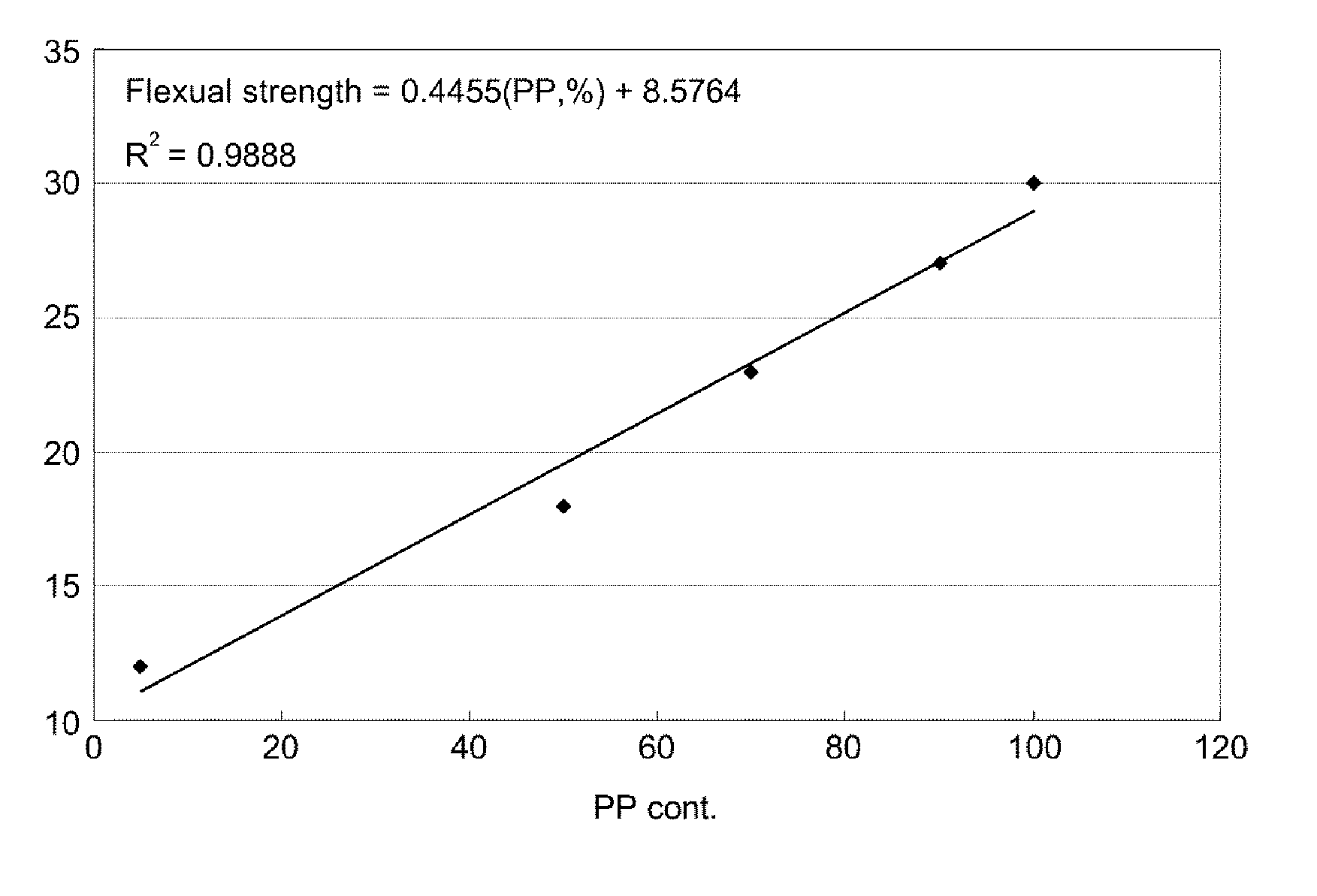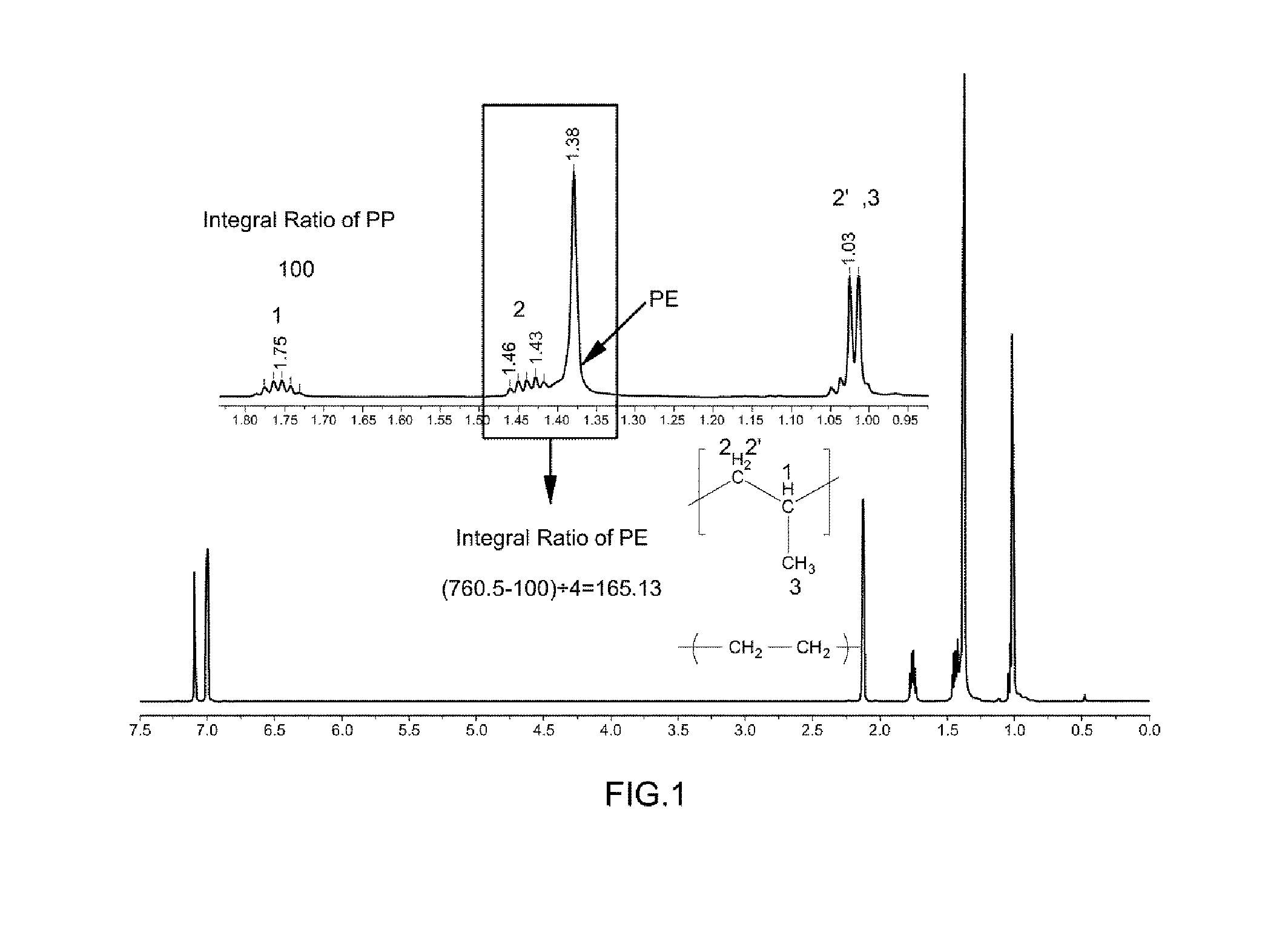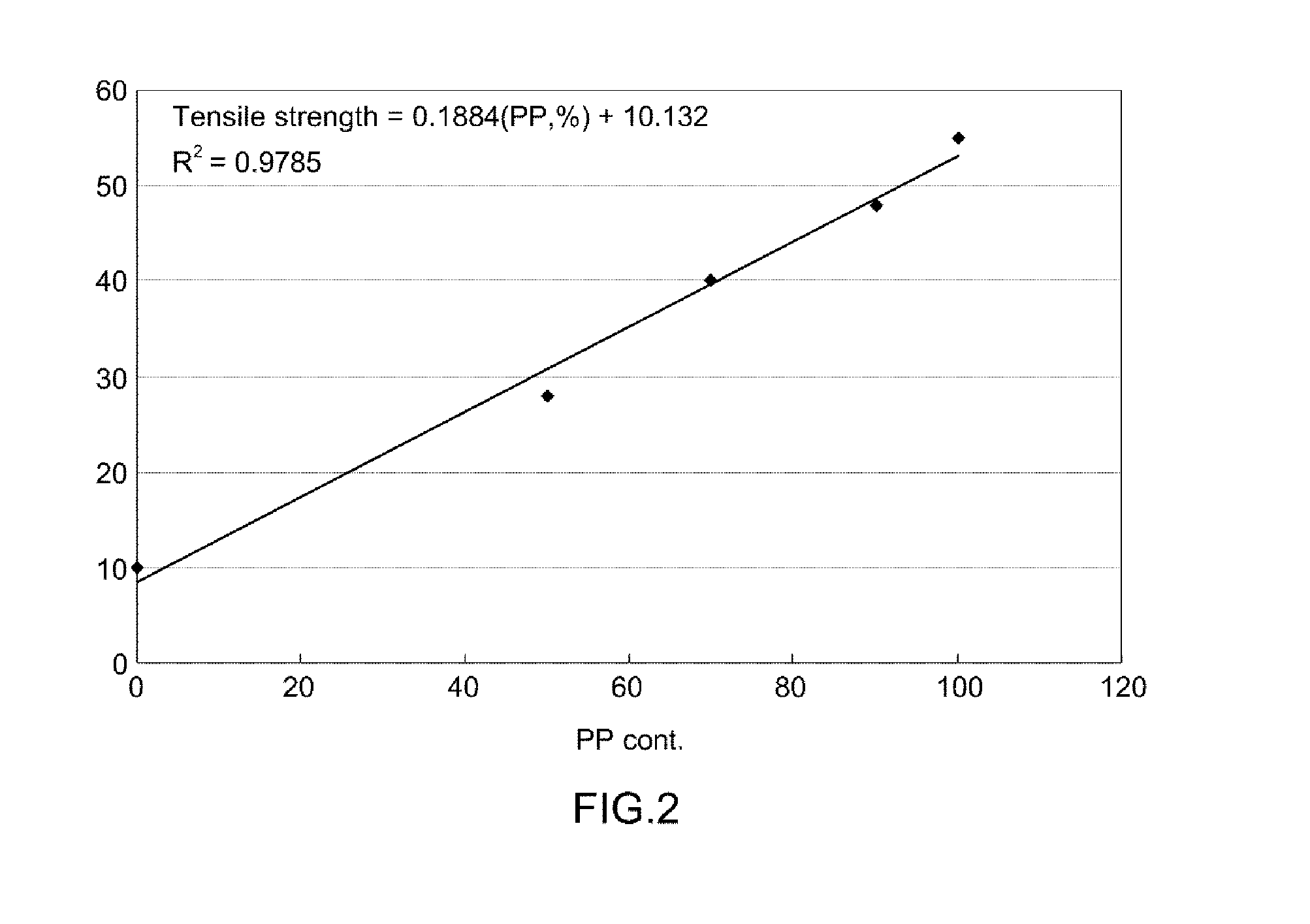Method for predicting physical properties of a composite blend of polypropylene and low density polypropylene
a composite blend and polypropylene technology, applied in the field of predicting the change in physical properties, can solve the problems of difficult to analyze the composition ratio of blending, difficult to obtain a sample thereof to assess physical properties, inadequate techniques, etc., and achieve excellent mechanical and physical properties, moderate prices, and high formability.
- Summary
- Abstract
- Description
- Claims
- Application Information
AI Technical Summary
Benefits of technology
Problems solved by technology
Method used
Image
Examples
examples
[0072]The following examples illustrate the invention and are not intended to limit the same.
example
Center Pillar Lower Trim Part (LG Chem LUPOL EI 5002)
[0073]In order to examine industrial applicability of the inventive modeling formula for predicting physical properties, it was applied to a center pillar lower trim of a vehicle. This part was made of a LG Chem LUPOL EI 5002 material, and its content ratio of polyethylene and low density polyethylene was 80 wt % and 20 wt %. In addition, the part satisfied the requirements for a material standard in which tensile strength is 25 MPa or higher and flexural strength is 29.4 MPa or higher. In order to examine the performance of the inventive method, the blending composition ratio of polyethylene and low density polyethylene was analyzed by using Calculation Formula 1 according to the inventive method (Table 5).
TABLE 5Analysis resultpolypropylene:low density polyethylene78 wt %:22 wt %
[0074]After the exact blending composition ratio was confirmed, a regression analysis was performed as described in FIGS. 2 and 3. In particular, the bl...
PUM
| Property | Measurement | Unit |
|---|---|---|
| melt flow rate | aaaaa | aaaaa |
| tensile strength | aaaaa | aaaaa |
| flexural strength | aaaaa | aaaaa |
Abstract
Description
Claims
Application Information
 Login to View More
Login to View More - R&D
- Intellectual Property
- Life Sciences
- Materials
- Tech Scout
- Unparalleled Data Quality
- Higher Quality Content
- 60% Fewer Hallucinations
Browse by: Latest US Patents, China's latest patents, Technical Efficacy Thesaurus, Application Domain, Technology Topic, Popular Technical Reports.
© 2025 PatSnap. All rights reserved.Legal|Privacy policy|Modern Slavery Act Transparency Statement|Sitemap|About US| Contact US: help@patsnap.com



